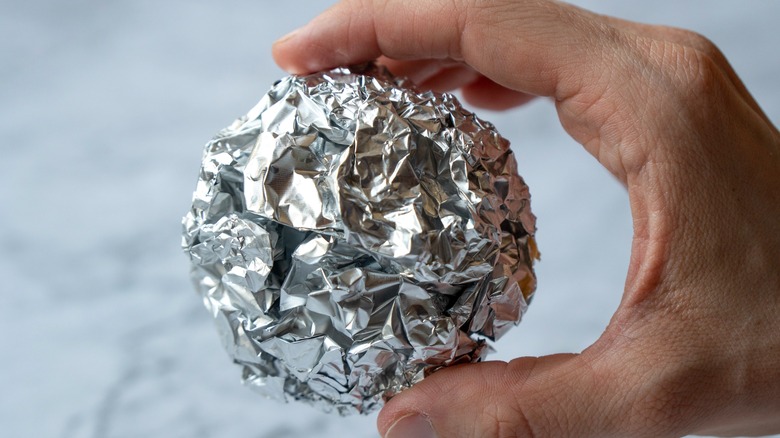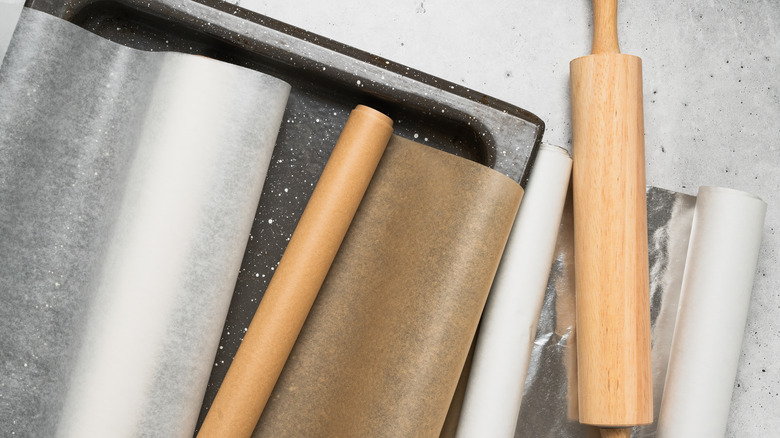Gordon Ramsay Is Wrong About Aluminum Foil
If you've watched even a few minutes of "Hell's Kitchen" or "Kitchen Nightmares," you'll know that chef Gordon Ramsay has no shortage of opinions. And while Ramsay may be extraordinarily accomplished, with a bucket load of Michelin stars, deep knowledge of French cuisine, and even a couple of Guinness World Records under his belt, he's not always right. For example, Ramsay gave you terrible grilled cheese advice.
Case in point: Chef Ramsay's erroneous opinion about the correct way to use aluminum foil in the kitchen. On numerous occasions, the celebrity chef has said there is a notable difference between the shiny and dull sides of your standard tinfoil. He claims that the dull side provides better heat insulation — so, in Ramsay's opinion, if you're covering a dish, the dull side of the foil should be on the inside (that is, facing or touching the food), and the shiny part on the outside to reflect heat. Ramsay has even lambasted social media users for not doing this.
However, this is a myth: Here's why both sides are pretty much the same thing — not considering nonstick foil, of course.
Why the dull side exists
The dull and shiny sides of aluminum foil stem from the way the metal sheets are processed in the factory. According to representatives for kitchen supplies maker Reynolds, there's a stage of production in which two layers of foil pass through a set of rollers simultaneously. The sides that are in contact with the rollers effectively get polished, resulting in the shiny side. The other sides of these two layers rub on each other, resulting in the dull side. They look different, but they're functionally the same when it comes to reflecting heat and other properties that matter in your cooking. Chef Ramsay may be one of the premier chefs in the world, but in this case, he's incorrect.
There's one exception here: If you're using nonstick aluminum foil, there is a "correct" side. This is because the nonstick coating is generally applied only to one side of the foil, and this is the side that should be in contact with your food. The nonstick side tends to be the dull one, but it should generally be labeled by the manufacturer to make life easier. And as a bonus tip: Nonstick foil can also help brown your food more than parchment if that's what you're looking for.
What about other kitchen products?
Maybe you're wondering whether there's a "right" side to use for other kitchen supplies that come all rolled up like tin foil. Firstly, parchment paper, also called baking paper: This tends to have a nonstick silicone coating on both sides, so there's generally no wrong way to use it. That said, it can't hurt to double-check in case there are brands that only apply the silicone to one side — if this is the case, the two sides should look and feel different from each other.
Similarly, wax paper typically features a thin wax coating on both sides of the roll, so there should generally be no need to worry about which side is in contact with your food. As for plastic wrap or Saran wrap, there's no noticeable difference between either side — although it may be possible to find products that have a coating on one side for extra cling — this should be obvious from any packaging.
Rest assured, general populace, if you're grabbing something from that one drawer in the kitchen where you stuff the foil, parchment paper, Saran wrap, and maybe the sandwich bags — unless the box tells you otherwise, wrap in whatever direction to your heart's content.



